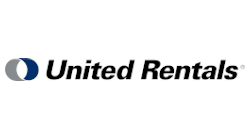Seven Trench Safety Toolbox Talk Topics from United Rentals to Advance Worker Knowledge about Trench Hazards and Safe Work Practices
Topics Provide Toolbox Talk Guide to Share Safety Messages
STAMFORD, Conn. – June 19, 2019– United Rentals, Inc. (NYSE: URI)today announced seven Trench Safety Toolbox Talk topics to help utilities and contractors promote a safety culture. Developed using United Rentals’ extensive experience in trench safety training programs, these topics can be the foundation for a toolbox talk series to advance worker knowledge about trench hazards and safe work practices in trenching and excavation operations.
Trench and excavation operations are among the most dangerous jobs in the construction industry. Events, such as the nationwide Trench Safety Stand Down, which is taking place June 17-21, provide an excellent opportunity for utilities and contractors to discuss the risks of working in trench and excavations with workers. United Rentals recommends companies regularly conduct toolbox talks, which are informal, topic-specific, short-format meetings, to share safety messages.
“The challenges of trenching and excavation job site safety are something companies face every day,” said Todd Hayes, region vice president – trench safety, United Rentals. “Everyone working at these sites needs to be knowledgeable with trench safety practices and toolbox talks keep safety top-of-mind with workers.”
Toolbox Talks to Promotive Safe Work Practices
Here are toolbox talk topics that United Rentals recommends utilities and contractors consider to reinforce trench safety basics to job site workers.
OSHA 12 Specific Requirements. Review the 12 specific requirements related to excavations specified by the Occupational Safety and Health Administration (OSHA 1926.651 General Requirements). Discuss these requirements, which address areas such as access and egress, exposure to vehicular traffic, warning systems and more, to promote greater awareness. Create a “Trenching & Excavating by the Numbers” exercise to build worker retention of excavation standards, such as five – the number of feet at which a protective system becomes mandatory – and 25 – the maximum distance in feet a worker may travel to reach a means of egress.
Soil Classification. Soils are among the most important factors to consider when following the required manual and visual tests to identify the correct protective system solution. The soil type dictates the trench protective system that can be used – sloping, bench, shielding or shoring. Remind workers that soil needs to be reevaluated anytime site conditions change.
Protective Systems – Sloping/Benching. Sloping and benching protect workers from cave-ins by cutting back trench walls. With sloping, the wall is cut at an angle inclined away from the excavation. Benching involves excavating the sides of an excavation to form one or a series of horizontal levels or steps. A toolbox talk can review common mistakes associated with benching, such as benching in Type C soil, which OSHA does not allow and benching in granular soil, OSHA allows benching in cohesive soil only – never in granular soil.
Protective Systems – Shoring. Shoring is an active system designed to prevent cave-ins by applying positive pressure against trench walls. Conduct a hands-on talk with a hydraulic vertical shore, reviewing available sizes, limitations, installation instructions and proper usage. Remind workers it is essential positive shoring be placed correctly, according to the manufacturer’s tabulated data.
Protective systems – Shielding and Trench Boxes. These are passive systems; they don’t prevent cave-ins as shoring does. They are designed to withstand a cave-in and protect workers provided the shield is properly installed. Review shielding options available, including aluminum boxes and steel boxes. Perform an inspection on a shield to show how to check that all components are present and intact.
Tabulated Data. Review different types of tabulated data that come with all manufactured shielding and shoring equipment. This data details proper equipment use and limitations, covering areas such as assembly instructions, soil types and maximum depth rating. Remind workers this information must always be onsite, either on paper or electronically. If the scope of work is outside what the equipment is rated for per the tabulated data, another protective system needs to be considered or an engineer needs to get involved to create a site-specific plan.
Site-Specific Engineering. Excavations near adjacent structures, underground utilities and roadways may come with unique and complex challenges that require professional input. Although contractors can usually utilize manufactured systems with tabulated data, there are times where additional guidance and stamped drawings from a professional engineer are necessary. A toolbox activity can be reviewing when to call upon a professional engineer, which include when heavy surcharges – such as heavy equipment, stockpiled equipment, roads, bridges and buildings – are close to the excavation.
“Maintaining up-to-date training on safety regulations and equipment solutions is indispensable to help keep construction workers safe and productive. Reviewing these fundamental principles with all employees will ensure that everyone has a good foundation for understanding the basics of trench safety. United Rentals is available to work with organizations to prepare the detailed materials needed to conduct meaningful toolbox talks,” said Hayes.
United Rentals Trench Safety Solutions
United Rentals is North America’s largest provider of trench safety training programs. Its team of qualified trainers have real trench experience and know the local, state, provincial and federal regulatory issues that affect job sites. Organizations can choose from professional training courses – offered online, onsite or at local United Rentals store locations – including excavation for competent person instruction, confined space entry training, safety and fall protection, site-specific regulatory compliance and operator certifications for equipment.
With more than 92 trench safety locations and the largest fleet of shoring and underground excavation rental equipment in North America, United Rentals provides customers customized, cost-effective rental solutions for their specific excavation needs. It supplies OSHA-compliant trench protective systems including shoring, shielding, lasers and optical instruments, and more. United Rentals services help companies in pre-bid analysis on protective system solutions, on-site consultation and engineering designs that can be applied successfully on a project.










